
emissions trading scheme


- A total of 39 of the top 50 emission offset projects, or 78% of them, were categorised as likely junk or worthless due to one or more fundamental failing that undermines its promised emission cuts.
- Eight others (16%) look problematic, with evidence suggesting they may have at least one fundamental failing and are potentially junk, according to the classification system applied.
- The efficacy of the remaining three projects (6%) could not be determined definitively as there was insufficient public, independent information to adequately assess the quality of the credits and/or accuracy of their claimed climate benefits.
“Overall, $1.16bn (£937m) of carbon credits have been traded so far from the projects classified by the investigation as likely junk or worthless; a further $400m of credits bought and sold were potentially junk.” – keep reading
Infographic: How are carbon offsets supposed to work?
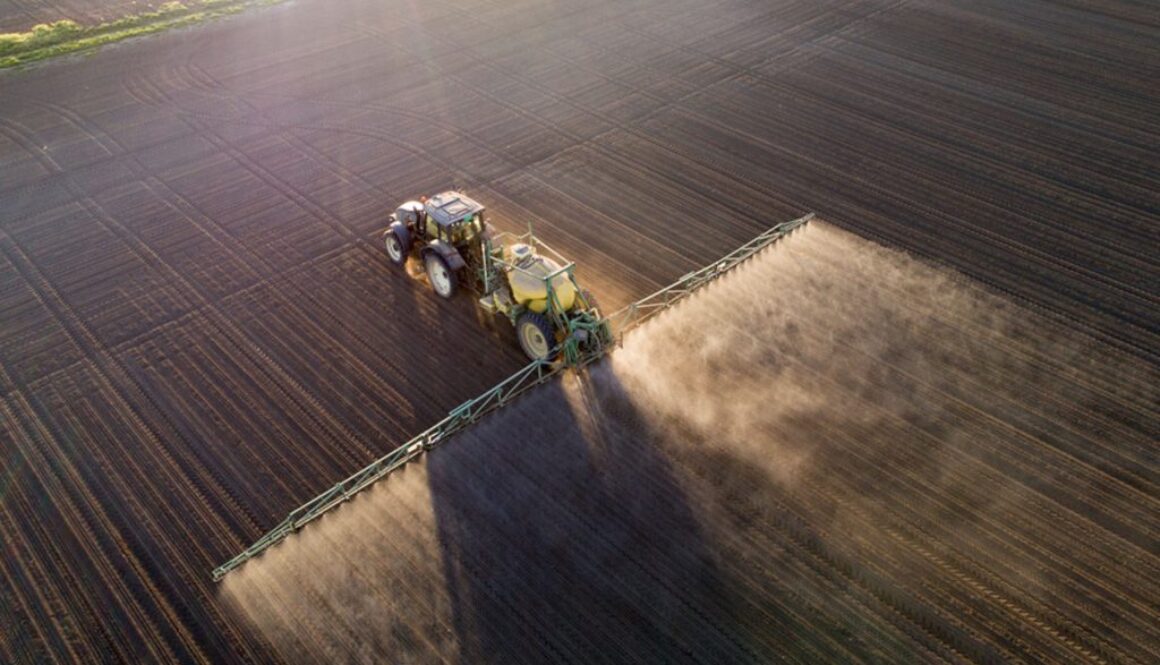
The recent report issued by the Intergovernmental Panel on Climate Change (IPCC) underscores the urgency of emissions reductions. For Aotearoa New Zealand, where 50% of emissions come from agriculture in the form of methane and nitrous oxide, this means the primary sector must be part of the response.
New Zealand is indeed the first country to investigate introducing a price on agricultural greenhouse gas emissions.
The most recent pricing proposals would require farmers to pay a levy on their agricultural emissions. To begin with, only 5% of emissions would be priced, with proposals to reduce the 95% free allocation gradually over time.
Much of the existing modelling shows emissions could be cut by up to 10% by reducing the intensity of production, often through lowering animal numbers and fertiliser use. This doesn’t necessarily mean lower profitability. With good pasture management, farmers may be able to reduce stocking rates and increase profits.
But Aotearoa is already one of the most efficient producers of meat and dairy products globally. If we reduce emissions here, will that not simply lead to other, less efficient countries picking up the lost production, while our farmers pay the price?
This idea is known as “carbon leakage” and is often used as an argument against any domestic policy that could result in reduced agricultural production. The issue is important as New Zealand depends heavily on agricultural exports. In 2022, of all merchandise trade, 65% were agricultural commodities.
Understanding whether carbon leakage will occur or not is a complex task. Here, we look at what evidence we have and insights from agricultural trade modelling.
New Zealand modelling
It’s difficult to know exactly what might happen in agriculture, as emissions pricing on agricultural products has not yet been used elsewhere. There is no historical evidence to draw on.
International modelling studies present a mixed picture of the likelihood of leakage: an OECD study estimated 34% of agricultural emissions would be leaked, mostly to developing countries.
Recent modelling for New Zealand examines a series of scenarios of domestic pricing on its own as well as international pricing. The results show that for the current proposal where only 5% of emissions are priced to begin with, with a 1% increase each year, New Zealand’s production of meat and dairy products could decline by 2050.
The effect on dairy producers would be a loss of returns of under 1%, while meat producers would face a 6% decline. Some of the production would be taken up by other countries, but the overall volume would be lower than in the baseline situation, where no emissions pricing existed.

This shows leakage may occur, with reductions in production of New Zealand dairy products. But global meat and dairy production by 2050 would be considerably lower than without the policy, which would have a positive overall impact on the climate.
As the proportion of emissions that are priced increases, we expect the quantity of meat and dairy produced in New Zealand to decrease. This in turn could increase the volume of leakage. –
More sustainable future diets
It is important to remember that although there is a reduction in meat and dairy production, there is likely to be an increase in the production of other types of food which doesn’t contribute so much to climate change.
A recent study shows how food consumption alone could contribute an additional degree of warming above preindustrial temperatures by 2100. This demonstrates the importance of food choices in addressing climate change.
Many of New Zealand’s trading partners are exploring and beginning to implement their own agricultural emissions-reduction goals and targets. Internationally, there is an increasing focus on the role international trade rules can play in addressing climate change, including border carbon adjustment mechanisms and environmental standards for imports.
In a similar scenario as described above, but where New Zealand’s main competitors also take action, New Zealand may actually see a small increase in production by 2050, despite the domestic pricing policy.
The extent of leakage therefore really depends on how other countries tackle their own emissions. Economy-wide net zero emissions targets are in place for Australia, Chile, European Union countries, the US and the UK by 2050, and for China by 2060.
The opportunity for leakage would be significantly reduced through multilateral agreements or through regional or bilateral commitments within trade agreements.
New Zealand could decide to be a leader and demonstrate to the rest of the world a commitment to reducing emissions from our highest emitting sector. This may result in some leakage initially, but this would likely decline as other countries take similar action.
Or we can wait until other countries begin to take more serious action on agricultural emissions. But in the meantime, emissions reductions will increasingly be driven through finance and private-sector initiatives, for example through access to processing companies, which are progressively requiring emissions reductions throughout their value chains and through lending and finance, where banks are beginning to offer reduced interest rates for sustainable practices.![]()

By: Professor of Energy and Climate Change, University of Manchester. Republished in full from The Conversation under a Creative Commons license. See the original article: March 25, 2023
The Intergovernmental Panel on Climate Change’s (IPCC) synthesis report recently landed with an authoritative thump, giving voice to hundreds of scientists endeavouring to understand the unfolding calamity of global heating. What’s changed since the last one in 2014? Well, we’ve dumped an additional third of a trillion tonnes of CO₂ into the atmosphere, primarily from burning fossil fuels. While world leaders promised to cut global emissions, they have presided over a 5% rise.
The new report evokes a mild sense of urgency, calling on governments to mobilise finance to accelerate the uptake of green technology. But its conclusions are far removed from a direct interpretation of the IPCC’s own carbon budgets (the total amount of CO₂ scientists estimate can be put into the atmosphere for a given temperature rise).
The report claims that, to maintain a 50:50 chance of warming not exceeding 1.5°C above pre-industrial levels, CO₂ emissions must be cut to “net-zero” by the “early 2050s”. Yet, updating the IPCC’s estimate of the 1.5°C carbon budget, from 2020 to 2023, and then drawing a straight line down from today’s total emissions to the point where all carbon emissions must cease, and without exceeding this budget, gives a zero CO₂ date of 2040.

Given it will take a few years to organise the necessary political structures and technical deployment, the date for eliminating all CO₂ emissions to remain within 1.5°C of warming comes closer still, to around the mid-2030s. This is a strikingly different level of urgency to that evoked by the IPCC’s “early 2050s”. Similar smoke and mirrors lie behind the “early 2070s” timeline the IPCC conjures for limiting global heating to 2°C.
IPCC science embeds colonial attitudes
For over two decades, the IPCC’s work on cutting emissions (what experts call “mitigation”) has been dominated by a particular group of modellers who use huge computer models to simulate what may happen to emissions under different assumptions, primarily related to price and technology. I’ve raised concerns before about how this select cadre, almost entirely based in wealthy, high-emitting nations, has undermined the necessary scale of emission reductions.
In 2023, I can no longer tiptoe around the sensibilities of those overseeing this bias. In my view, they have been as damaging to the agenda of cutting emissions as Exxon was in misleading the public about climate science. The IPCC’s mitigation report in 2022 did include a chapter on “demand, services and social aspects” as a repository for alternative voices, but these were reduced to an inaudible whisper in the latest report’s influential summary for policymakers.
The specialist modelling groups (referred to as Integrated Assessment Modelling, or IAMs) have successfully crowded out competing voices, reducing the task of mitigation to price-induced shifts in technology – some of the most important of which, like so-called “negative emissions technologies”, are barely out of the laboratory.
The IPCC offers many “scenarios” of future low-carbon energy systems and how we might get there from here. But as the work of academic Tejal Kanitkar and others has made clear, not only do these scenarios prefer speculative technology tomorrow over deeply challenging policies today (effectively a greenwashed business-as-usual), they also systematically embed colonial attitudes towards “developing nations”.
With few if any exceptions, they maintain current levels of inequality between developed and developing nations, with several scenarios actually increasing the levels of inequality. Granted, many IAM modellers strive to work objectively, but they do so within deeply subjective boundaries established and preserved by those leading such groups.

What happened to equity?
If we step outside the rarefied realm of IAM scenarios that leading climate scientist Johan Rockström describes as “academic gymnastics that have nothing to do with reality”, it’s clear that not exceeding 1.5°C or 2°C will require fundamental changes to most facets of modern life.
Starting now, to not exceed 1.5°C of warming requires 11% year-on-year cuts in emissions, falling to nearer 5% for 2°C. However, these global average rates ignore the core concept of equity, central to all UN climate negotiations, which gives “developing country parties” a little longer to decarbonise.
Include equity and most “developed” nations need to reach zero CO₂ emissions between 2030 and 2035, with developing nations following suit up to a decade later. Any delay will shrink these timelines still further.
Most IAM models ignore and often even exacerbate the obscene inequality in energy use and emissions, both within nations and between individuals. As the International Energy Agency recently reported, the top 10% of emitters accounted for nearly half of global CO₂ emissions from energy use in 2021, compared with 0.2% for the bottom 10%. More disturbingly, the greenhouse gas emissions of the top 1% are 1.5 times those of the bottom half of the world’s population.
So where does this leave us? In wealthier nations, any hope of arresting global heating at 1.5 or 2°C demands a technical revolution on the scale of the post-war Marshall Plan. Rather than relying on technologies such as direct air capture of CO₂ to mature in the near future, countries like the UK must rapidly deploy tried-and-tested technologies.
Retrofit housing stock, shift from mass ownership of combustion-engine cars to expanded zero-carbon public transport, electrify industries, build new homes to Passivhaus standard, roll-out a zero-carbon energy supply and, crucially, phase out fossil fuel production.
Three decades of complacency has meant technology on its own cannot now cut emissions fast enough. A second, accompanying phase, must be the rapid reduction of energy and material consumption.
Given deep inequalities, this, and deploying zero-carbon infrastructure, is only possible by re-allocating society’s productive capacity away from enabling the private luxury of a few and austerity for everyone else, and towards wider public prosperity and private sufficiency.
For most people, tackling climate change will bring multiple benefits, from affordable housing to secure employment. But for those few of us who have disproportionately benefited from the status quo, it means a profound reduction in how much energy we use and stuff we accumulate.
The question now is, will we high-consuming few make (voluntarily or by force) the fundamental changes needed for decarbonisation in a timely and organised manner? Or will we fight to maintain our privileges and let the rapidly changing climate do it, chaotically and brutally, for us?
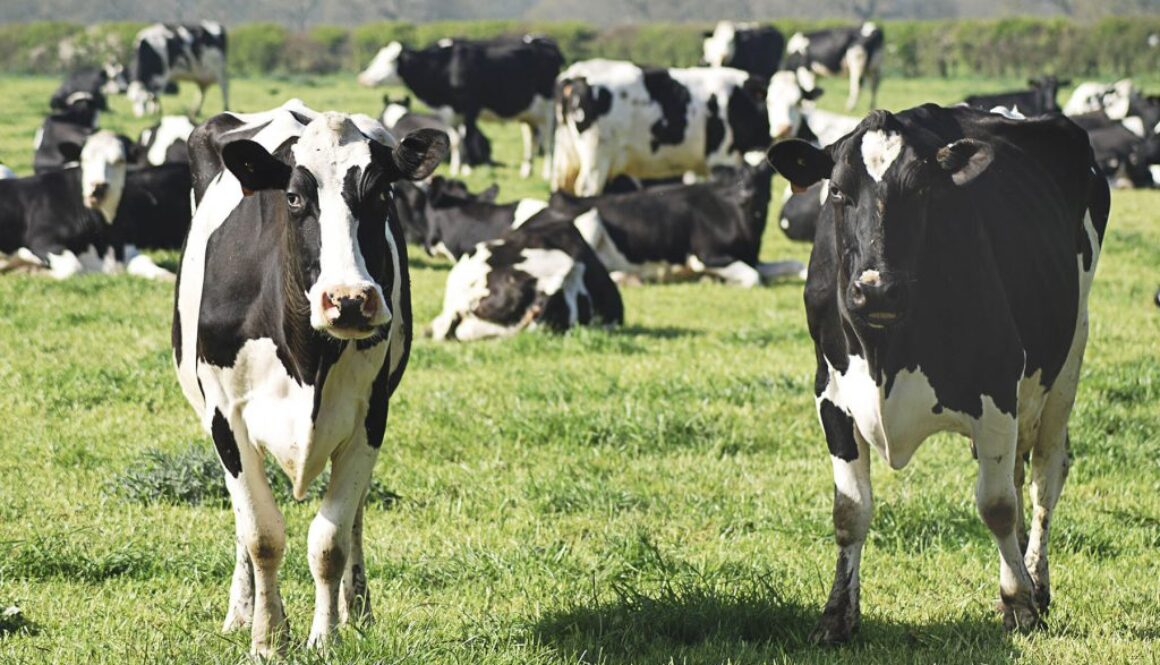
This is a submission on behalf of the Environmental Defence Society (EDS) on the Government’s Discussion Document Te Tātai utu o nā tukunga: Pricing Agricultural Emissions.
The submission responds to the schedule of questions included in the discussion document, reproduced in full with permission from Gary Taylor Chief Executive, Environmental Defence Society:
Question 1: Do you think modifications are required to the proposed farm-level levy system to ensure it delivers sufficient reductions in gross emissions from the agriculture sector? Please explain.
If farmers are to balk at the proposal as indicated by recent statements from Federated Farmers and others, and widespread non-compliance follows, then implementing a processor-level system would be a practical way forward. It is alarming how some farmers are signalling an unwillingness to comply with the rule of law. The farm-level option (which has benefits in sending price signals to individual famers) may therefore not be workable at least in the short term. Processors could develop their own incentive arrangements for their suppliers and some have experience in doing that already.
Question 2: Are tradeable methane quotas an option the Government should consider further in the future? Why?
There may be benefit in seeing the levy system as a transition to a cap and trade system. This means the levy system should be designed so that such a transition could occur. The cap should be set (and reviewed from time to time) by the Climate Change Commission (Commission) at the level that achieves the reduction targets. If Ministers were to make the decisions, then there should be transparent criteria in place, and they should be advised on the appropriate level by the Commission.
Question 3: Which option do you prefer for pricing agricultural emissions by 2025 and why?
A farm-level levy system, with fertiliser in the New Zealand Emissions Trading Scheme (ETS), would give individual farmers incentives to reduce emissions and reward those doing so. However, that may be an impractical option given that some farmers seem determined to not cooperate with any system. For that reason, we favour a pragmatic approach where pricing is set at the processor level, which would help avoid non-compliance. Processors could then develop incentives that would apply to their supplier cohort. There are also questions around whether a farm-level system could be developed in time.
Prices should be set either directly by the Commission, or if by Ministers, on the advice of the Commission and subject to transparent criteria.
Fertiliser should come under the ETS which would mean all fertiliser users are captured and the price signal applies across the sector.
Question 4: Do you support the proposed approach for reporting of emissions? Why, and what improvements should be considered?
Broadly yes but further work is needed to simplify the reporting system and ensure the obligations are proportional to the need.
Question 5: Do you support the proposed approach to setting levy prices? Why, and what improvements should be considered?
Price setting cannot be the responsibility of the sector itself. It must be independent and linked to the methane reductions required. As mentioned above, EDS favours this responsibility resting with the independent Commission (analogous to the Reserve Bank on interest rates). But if set by Ministers, then there should be clear decision-making criteria, and they should receive advice from the Commission. Further, the proposed ETS discount rates for long-lived gases are too generous given the persistent delays in bringing the sector into a pricing mechanism.
Question 6: Do you support the proposed approach to revenue recycling? Why, and what improvements should be considered?
Recycling revenue into finding new abatement approaches makes sense in theory, but the problem is that over $100m of public money has gone down that route since the early 2000s, with very little to show for it. If revenue is to go into research it needs to be to entities that offer prospect of deployment of real technologies into the field. Research criteria therefore need to focus on deployment.
The answer to emissions mitigation is to reduce land use intensity. Some compensation for that might also be needed given the farming sector has simply been following the economic signals to date. There is virtue in the model of low-impact pastoral farming with indigenous forestry, and recycling could support that kind of transition.
The big gap in the policy settings, at present, is the lack of strong and effective incentives for indigenous afforestation. Revenue recycling should be used to create such incentives, given the longer term sequestration and biodiversity benefits that would follow.
Further consideration should be given to whether revenue from the levy should also be used to support farmers needing assistance with adaptation crises on the farm (such as droughts and floods).
Question 7: Do you support the proposed approach for incentive payments to encourage additional emissions reductions? Why, and what improvements should be considered?
The price signals should be robust enough to incentivise the emission reductions required. Otherwise the sector is getting disproportional assistance / subsidies from the Government over other sectors.
Question 8: Do you support the proposed approach for recognising carbon sequestration from riparian plantings and management of indigenous vegetation, both in the short and long term? Why, and what improvements should be considered?
Two approaches are required here.
The first is to create a biodiversity incentive payment to support native forest and related plantings or regeneration. The proposed interim approach will achieve that, in part, but biodiversity enhancements need to be considered in the broader context and be designed to encourage and support native forest restoration at landscape scale.
The second is to ban permanent exotic carbon forests in the ETS.
The first approach can help support related government policies such as the National Policy Statement for Indigenous Biodiversity. The second would prevent widespread monocultures with their attendant adverse landscape impacts and fire and disease risks.
Question 9: Do you support the introduction of an interim processor-level levy in 2025 if the farm-level system is not ready? If not, what alternative would you propose to ensure agricultural emissions pricing starts in 2025?
Yes. In fact we think that should be the way forward in any event.
Question 10: Do you think the proposed system for pricing agricultural emissions is equitable, both within the agriculture sector, and across other sectors, and across New Zealand generally? Why and what changes to the system would be required to make it equitable?
It is time that the sector played its part in mitigating the impacts of climate change. It has got away with too much, for too long, and continuing taxpayer subsidy and support and the proposed incremental nature of the pricing obligations continue that approach. It is inequitable for the primary sector to be relying on others which are paying their way through the ETS.
With respect to Māori landowners, there may be a case for some interim support given they appear to be disproportionately impacted by the proposal. The best way to do that is to create a special category in the ETS for native forest regeneration and establishment that gives a long-term revenue stream as good as or better than permanent exotic carbon forests.
Question 11: In principle, do you think the agricultural sector should pay for any shortfall in its emissions reductions? If so, do you think using levy revenue would be an appropriate mechanism for this?
Yes and that calculation should be made by the Commission.
Question 12: What impacts or implications do you foresee as a result of each of the Government’s proposals in the short and long term?
Unless the Government’s proposals are enacted, we see widespread planting of permanent exotic carbon forests and rural non-compliance with the law. There will be some emission reductions, but the sector will continue to hold out on meeting its fair share, as it has since 2002. The climate will continue to warm with consequent droughts, floods and sea-level rise and farmers will continue to hold out their hands for Government support when impacted.
Question 13: What steps should the Crown be taking to protect relevant iwi and Māori interests, in line with Te Tiriti o Waitangi? How should the Crown support Māori land owners, farmers and growers in a pricing system?
By changing the pricing incentives to favour permanent native forests over permanent exotic ones. Māori landowners have indicated a preference for natives but the pricing incentives are going the wrong way.
Question 14: Do you support the proposed approach for verification, compliance and enforcement? Why, and what improvements should be considered?
Yes.
Question 15: Do you have any other priority issues that you would like to share on the Government’s proposals for addressing agricultural emissions?
The glaring gap is the absence of the right pricing incentives to encourage native forest restoration that would lead to a virtuous mixed land use in which native forests offset some on-farm emissions over time.
Ends.
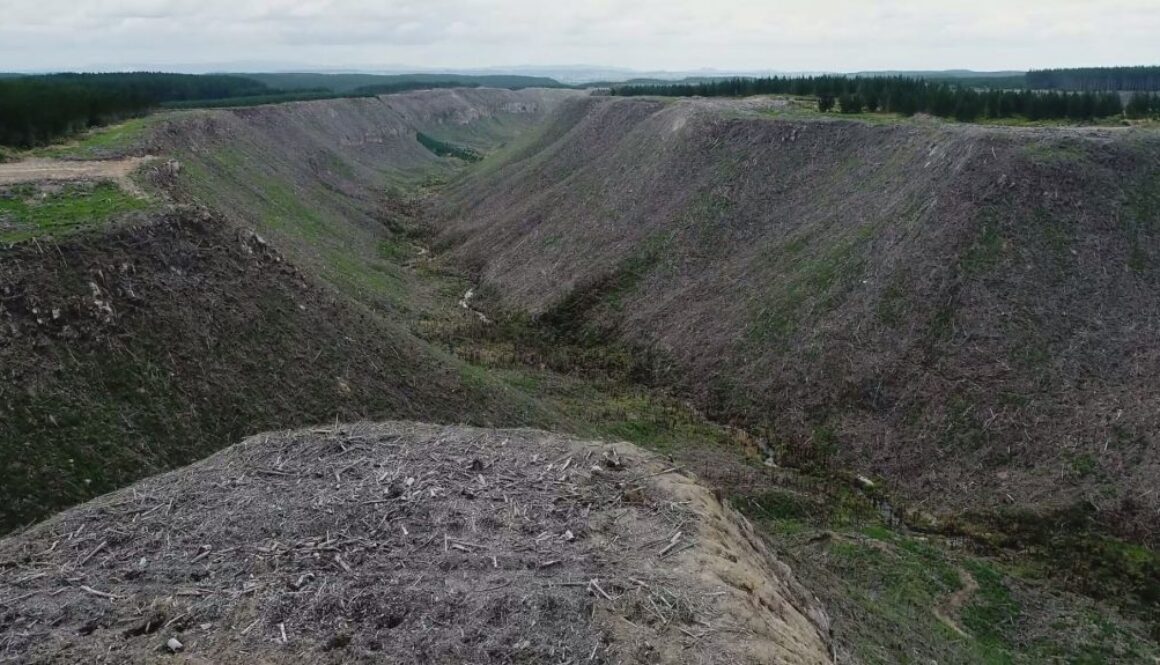
Top image: PureAdvantage
Reposted from Pure Advantage:
There is a new risk to you – the taxpayer – from the government’s recent decision to back off from excluding exotic species like pine from the permanent forest category of the emissions trading scheme.
From 1 January 2023 forest owners can lock up pine plantations, as ‘permanent forests’. In return, while the trees are growing, owners will be able to earn credits which they can sell to polluting industries to offset emissions. When the trees stop growing those revenue streams finish. This means pine plantations will increasingly be planted with no intent to harvest. A new exotic carbon farming industry will rapidly spread across the land–an industry we can think of as carbon mining.
Just like its traditional format, carbon mining is an extractive industry. Once there is no resource left–in this case, when the pine trees stop growing–the mine is of no value and becomes a liability.
In addition to the long-term costs of managing a plantation in its ‘permanent’ state, any deforestation requires the owners to buy emission units. There is a very real risk of a ticking time bomb with the price of emissions units increasing significantly over time.
Pinus radiata is an introduced species, unlike native forests with diversity and climate resilience. With increasing impacts from climate change, pine plantations present heightened risks.
They burn well, creating risks for neighbours and releasing CO2 back into the atmosphere. The recent wildfires in the Landes forest, the largest planted forest in western Europe, saw thousands of hectares burnt and thousands of people evacuated.
These are monocultures, at a time when a biodiversity crisis and collapsing ecosystems are posing risks to human survival. In NZ, they are also monoclones, with a lack of genetic diversity that makes them very vulnerable to climate change. In many parts of the world, pests and diseases are wiping out huge areas of pine plantations.
Pinus radiata is also a relatively short-lived species, especially in New Zealand due to intensive genetic modification. Compared with native forests, pine plantations sequester carbon for a relatively brief period. As the trees age and die, the risks of fire and disease increase, along with the risks that the plantations will be abandoned.
Promises may be made that instead, pine plantations will be converted to native forests. This is a very difficult and high risk process, however. Take for example Maungataniwha pine plantation.
It can take at least a decade to clear logged land of wilding pines and to get it to the point where it can be described as fully regenerated – supposing you are lucky enough to have native seeds in the soil already. It’s costing the Forest Lifeforce Restoration Trust around $70,000 per year, plus a lot of volunteer hours.
If land owners are not inclined or able to meet their obligations, these sorts of projects will be extremely challenging. Government and communities will pick up the costs of remediation.
Millions more would be needed to pay for the purchase of emission units to offset the felled pine, and it is hard to see where this money would come from.
As designed, the ETS is encouraging the misallocation of capital towards carbon mining, with the potential for damaging long-term socio-economic and biodiversity outcomes.
Ultimately, taxpayers and society will be left with the bill. The environment will suffer, biodiversity will be negatively impacted, resilience to climate change will be reduced and you, me, our children will be picking up the bill.
See also this website:
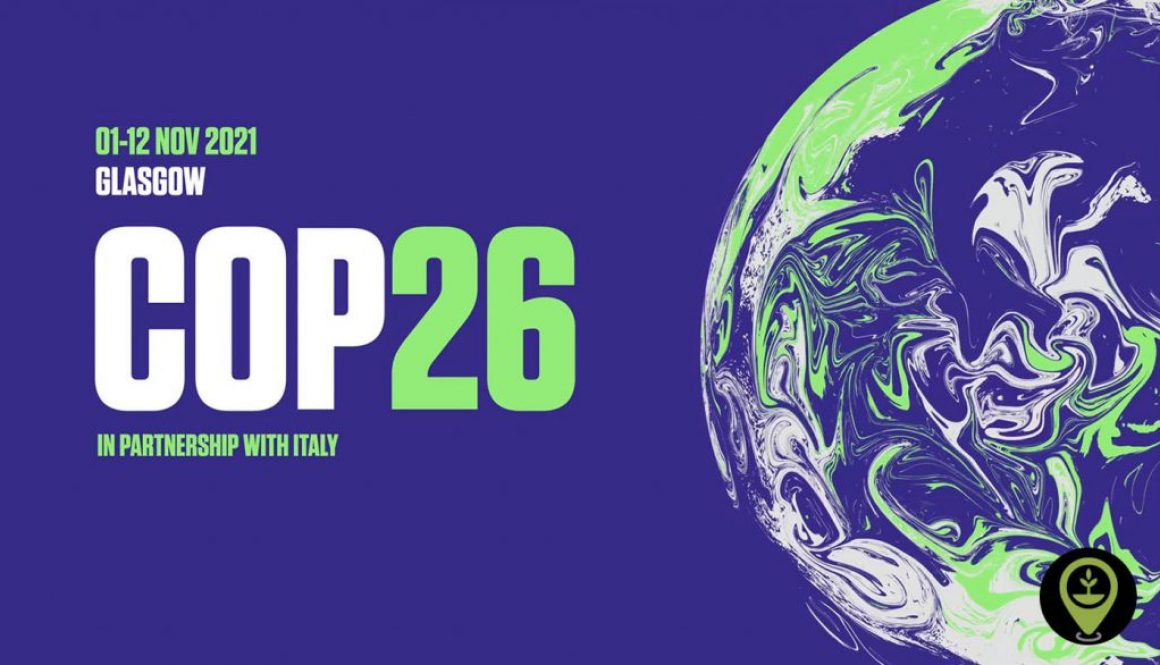
The carbon budget: a moving target that politicians just moved beyond reach.
Bankrupting the Carbon Budget:
What tipping points mean for the carbon budget
In Bankrupting the Carbon Budget: Part I, tipping points were explained in Videos 1 and 2.
Others tipping points include wildfires in the Arctic and Australia. Together these released around 1Gt of CO2 in 2020. The devastation was so great in places that the conditions that led to the evolution of these ancient ecosystems no longer exist. ‘Zombie’ wildfires in boreal forests in Siberia and Canada and Alaska continue to burn peat underground over winter, re-igniting record-breaking forest fires in the summer of 2021.
These forests, which make up large parts of the biosphere that once absorbed carbon and locked it away, are now releasing carbon to the atmosphere together with human-caused emissions. They have passed a tipping point; a point of no return. The countdown clock in Fig. 1 doesn’t include these emissions because the compound effects are so complex, they have yet to be included in Earth systems models used by the Intergovernmental Panel on Climate Change (IPCC).
But the atmosphere doesn’t care where these emissions originate. Nor how much nations—most notably New Zealand—or businesses cheat on their carbon accounting. The reality is that the carbon budget is a globally shared account. Governments think they know how much we have left to ‘spend’, but the burning forests and melting permafrost and methane clathrates are making CO2 withdrawals over which we have no control. All we know is that somewhere between warming of 1-2°C, some tipping points will be irreversible and warming will accelerate, causing even more tipping points to fall like dominoes.
A race against time
The relationship between the amount of CO2 in the atmosphere and warming is well-understood physics and chemistry. But there is a delay—a lag time of 10-20 years—between adding CO2 to the atmosphere and warming. So even if we switch off all emissions today, things will get hotter over the next two decades. It takes even longer for melting icecaps to raise sea levels, unless there’s an abrupt Meltwater Event (historically, these have raised sea levels as much as 4m/century).
The IPCC is banking our future existence on the lag time to literally buy us time to drawdown enough CO2 from the atmosphere and permanently store it back where it came from, with fingers crossed that will return the planet to a safe operating space of 350ppm.
The Plan: built-in assumptions
The crucial thing about The Plan is that it depends entirely on assumptions. The most important assumption is that carbon capture technologies will draw down and safely store CO2 underground before warming triggers irreversible tipping points. This assumption (otherwise known as magical thinking) is because there isn’t enough land on Earth to plant enough trees to offset emissions while still being able to grow food to feed an exploding global population:
The Plan by the numbers: 2019 – 2050
- Atmospheric concentration at the start of 2019: 408ppm
- Emit: no more than 400Gt of CO2 over the next 21 years; this would add around 23ppm to the atmosphere.
- Offset emissions: as some emissions are unavoidable, they must be 100% offset by drawing down the same amount of CO2 as emitted and storing it permanently underground or in natural ecosystems. Plantation forestry is by definition not permanent, so it shouldn’t be regarded as a permanent offset because the carbon in it is recycled back into the atmosphere.
- Draw down: an average 3.9Gt of CO2 every year (total 81.9Gt between 2019-2050) and store it underground and in natural ecosystems. In total, this would remove around 10.5ppm. Again, plantation forestry shouldn’t be regarded as a permanent drawdown.
- Together, The Plan means that atmospheric concentration as of January 2050 will be: 408ppm + 23ppm – 10.5pm = 420.5ppm.
- Limitations to offsetting and drawdown:
- The world’s terrestrial ecosystems can only hold between 40 and 100Gt, so by 2050, CO2 will need to be permanently stored elsewhere.
- Burning forests and melting permafrost and methane clathrates are emitting CO2 and methane. We don’t know how much, we have no control over it, but we do know this is eating into the existing carbon budget.
The Plan by the numbers: 2050 – 2100
- The planned atmospheric concentration at the start of 2050: 420.5ppm
- Emit: zero CO2
- Offset: As some emissions are unavoidable, they must be 100% offset by drawing down the same amount of CO2 as emitted and storing it permanently underground. By now, terrestrial ecosystems will be unable to store any more carbon.
- Draw down average 24Gt/year until 2100 (24Gt x 50 years = 1,250Gt or 72ppm) and store it…somewhere.
- Planned atmospheric concentration at the start of 2100: 420.5ppm – 72ppm = 348.5ppm.
- Limitations to offsetting and draw down:
- Burning forests and melting permafrost and methane clathrates will be emitting far more CO2 and methane, so the budget will likely need further revision.
The Plan: how are we doing so far? 2019 – 2021
- Atmospheric concentration at the start of 2019: 408ppm
- Atmospheric concentration at start of 2022: 418ppm, ie, we’re going to hit 420.5pm before 2024, not 2050.
- Emitted: 107Gt of CO2 (26.7% of the 21-year budget ‘spent’ in 3 years)
- Offset: A handful of the world’s largest carbon polluters are buying up most of the land available for afforestation/reforestation to offset their emissions, leaving no available land for others to offset theirs. This includes land needed to feed people. Many are investing in low value or ‘ghost’ forests such as palm oil plantations, because plants that grow faster earn far more money from carbon credits. Many corporations have no plans to ever become carbon neutral because they will pass the cost of cheap and often useless offsets onto customers. The New Zealand Government, which is using taxpayer dollars to subside the eye-watering carbon cost of agriculture (giving them a 95% discount on emissions), and Fonterra, our largest carbon polluter, also plan to buy carbon credits offshore because they’re cheaper.
- Draw down: In spite of all the reforestation and rewilding projects around the globe, terrestrial ecosystem destruction (land use change) exceeded reforestation and offsetting by approximately 10Gt (Fig. 2). A large chunk of these losses are from the Amazon, parts of which have become so dry that they can no longer support re-forestation, so they’re turning in savannahs or being used to grow palm oil, soya, and methane-emitting cows.
- Limitations to offsetting and drawdown:
- Oddities with emissions trading schemes not accounting for the value of carbon locked in established forests and their soils, has created perverse incentives: old-growth and naturally regenerating forests are being cut down and/or burned so they can be replaced by fast growing monoculture crops like pine forests that earn more from carbon credits (if they survive wildfires and rapidly rising temperatures). And COP26 did nothing to prevent this from happening into the future (scroll down).
- The only company extracting CO2 and permanently storing it underground (versus selling it as fuel) is in Iceland. In September 2021, Climeworks’ operations scaled up. It now draws down and stores 4,000 tonnes CO2/year. To scale up to 3.9Gt/year (‘The Plan’) would require building and deploying 9.5 million additional fully operating plants of the same size. To scale up to 24Gt/year from 2050 onward would require 58.5 million additional fully operational plants of the same size. And then there’s this:
- Oddities with emissions trading schemes not accounting for the value of carbon locked in established forests and their soils, has created perverse incentives: old-growth and naturally regenerating forests are being cut down and/or burned so they can be replaced by fast growing monoculture crops like pine forests that earn more from carbon credits (if they survive wildfires and rapidly rising temperatures). And COP26 did nothing to prevent this from happening into the future (scroll down).
“No artificial machines that are even in the design stage will also clean our air, clean our water, provide habitat for wildlife and all the other useful features of trees.” – Sophie Bertazzo, Senior editor, Conservation International
COP26: bankrupting the carbon budget
COP26: The oceans
As Bonnie Waring said in the quote above:
“If we absolutely maximised the amount of vegetation all land on Earth could hold…”
The oddity in The Plan is that it largely ignores 70% of the surface of the planet that’s not land: the oceans, or more specifically the blue carbon in them. For the first time, the capability of the oceans to rapidly draw down and permanently store vast quantities of CO2 was finally addressed at COP26.
New Zealand has an exclusive oceanic economic zone 14 times larger than our land area. Why isn’t the government (and heavy carbon polluters) using that incredible capacity to invest far more in locally produced blue carbon? Fed by the sun, with no need for irrigation or agricultural chemicals, some species can grow up to 1m/day, drawing down as much as five times more carbon dioxide from the atmosphere than rainforests, and permanently sequestering if not harvested and instead, cut and dropped into deep ocean.
Watch this (deep blue) space.
More information
- COP26: The final draft
- Glasgow’s 2030 credibility gap: net zero’s lip service to climate action: Climate Action Tracker
- Detailed analyses of each component of COP26: Carbon Brief (scroll down the page a bit to see the links to each section)
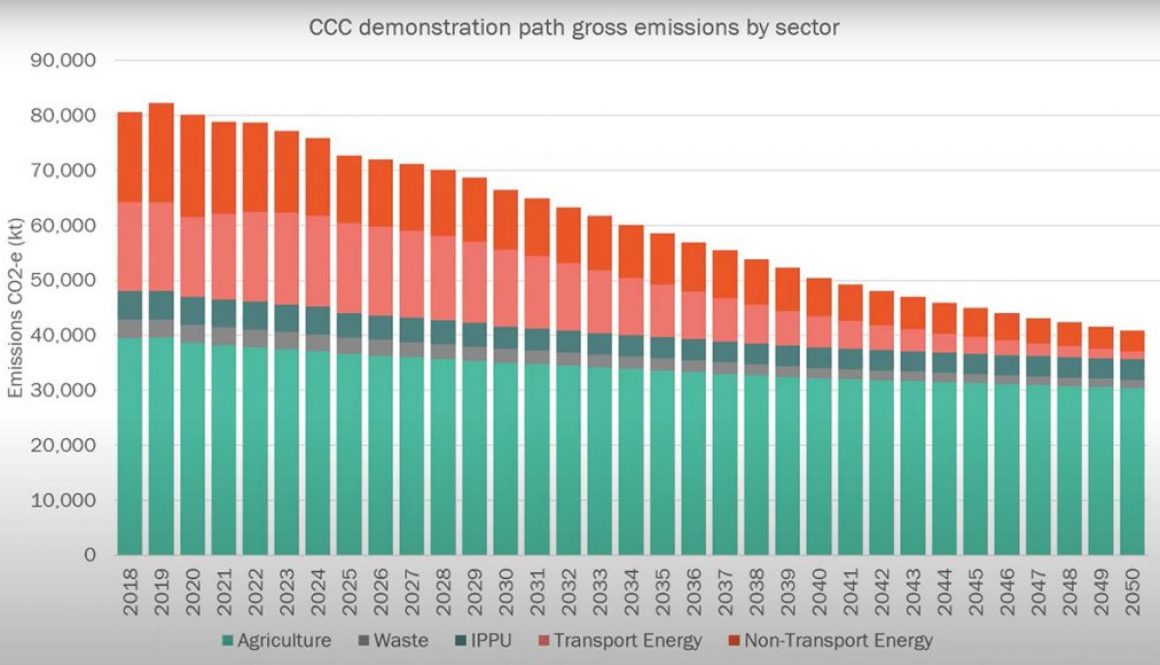
In 2019, Aotearoa’s net greenhouse gas emissions were 54.9 mt (megatonnes) of CO2-e (that means all greenhouse gases added together).
The single biggest emitter was agriculture: 48% or 39.6 mt (Figure ES 4.2).
From a climate warming perspective, all of that 54.9 mt of carbon was added to the excessive carbon debt—the highest in several million years—already in the atmosphere. But economists and policymakers are writing off this carbon debt because the goal is not to stop feeding the climate beast with more greenhouse gases. Nope. The goal is to keep adding more so that we can meet our obligations under the 2015 Paris Agreement to keep global temperatures under 1.5°C.
Yes, I know it’s irrational to be fixated on a 9-year old agreement that only one tiny country, Gambia, is anywhere close to meeting, using a budget to 2035 that’s going to be broken before then, given that the World Meteorological Organisation estimates we could reach 1.5°C sometime in 2026 [update 2024: we reached that in 2023]. But since irrational economics is driving our plan, let’s use their figures, and with a bit of simple arithmetic, calculate what our agricultural emissions will cost as we head into 2026, the first year that the agricultural sector in Aotearoa has to start paying for any of its emissions.
You may need a primer in the ETS (Emissions Trading Scheme) for this next bit to make sense, but simply put, it’s a polluter-pays scheme that places a $ value on CO2-e. Each 1-tonne of CO2-e is called a New Zealand Unit or NZU. They’re tradable commodities, so the rules of supply and demand mean prices fluctuate. In March 2021, one NZU cost $36. By September, it was $65, because by then, a lot of people had already done the calculations set out below, and realised how valuable these NZUs are going to become.
But let’s be really conservative and say an NZU is going to stay at $65.00 for the next three years. All we need to do is multiply $65 by the net amount of e-carbon emitted during that period. We’ll base the emissions on the Climate Commission proposed emissions budgets (Fig. 5.2 below). Again, these budgets are likely optimistic, but let’s be optimistic.
Years 2022-2025 net emissions = 208.5 mt total. As a megaton (mt) = 1,000,000 tonnes, that’s 2,085,000,000 tonnes x $65 = total $135,525,000,000 over three years.
Remember, the agricultural sector is exempt until 2026, so they don’t have to pay a cent of this.
Year 2026: By now, because they’ve had no incentives to change, the agricultural sector is assumed to be contributing 58% of all greenhouse gases to the atmosphere. The price of an NZU is expected to increase to $73.60. It’s probably going to be waaay higher, but let’s stick with that very conservative price estimate, to work out how much the agricultural sector should pay, using the emissions budget in Fig. 5.2 below, of 59.7 gt net emissions. That’s x 58% x 59,700,000 x $73.60 = $2,548,473,600.
If the number of zeros is confounding, that’s $2.55 billion worth of emissions. In one year. Just from agriculture.
But under New Zealand’s ETS, in 2026, agriculture is given a 95% discount. So they’re up for just $127,423,680 ($127.5 million). In fact, the agricultural sector is barely expected to reduce emissions by 11% by 2050 (see the graph at the top of this page).
Yes, I also know that the $ value under the ETS is not designed to put an actual value on emissions. It’s just an economic mechanism to incentivise industries to reduce emissions so that we can meet an outdated target to keep us under 1.5°C. But it’s the only mechanism we have. In the real world, all those greenhouse gases will be going into the atmosphere, feeding the climate beast, generating record-breaking floods and droughts that will bring serious costs to agriculture, because plans and policies based on economics can’t trump the laws of physics and chemistry and nature doesn’t do bailouts.
Maybe now is a good time to invest in food that’s grown like beer.






